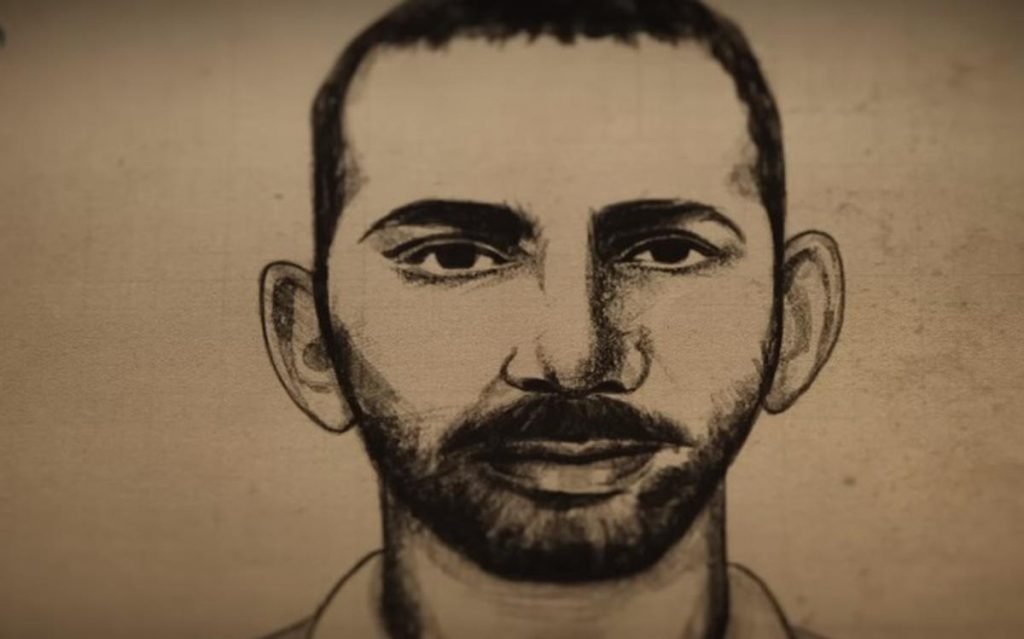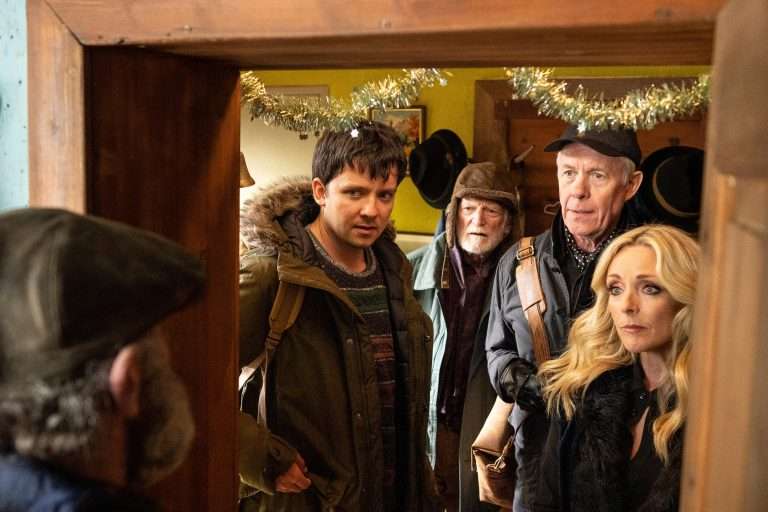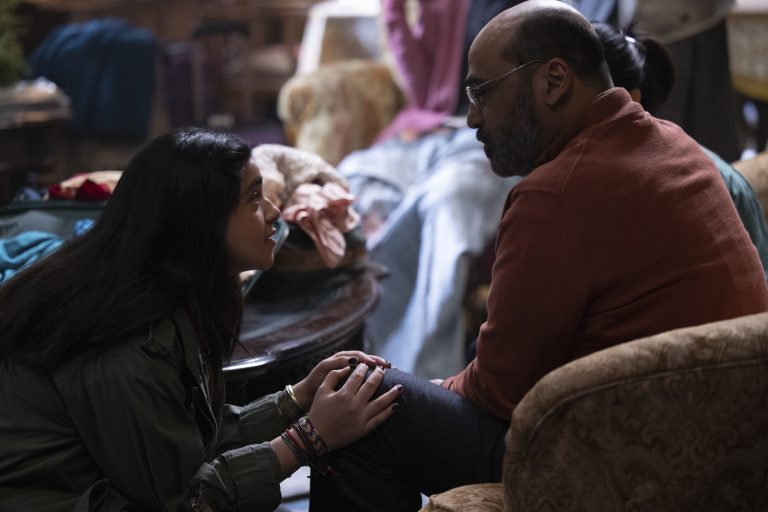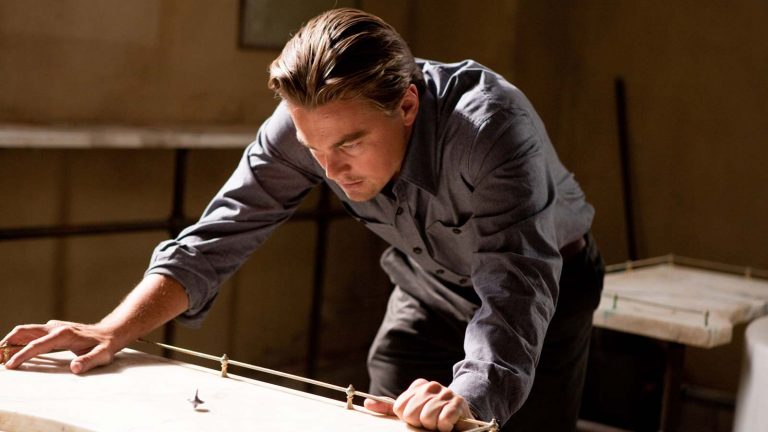Netflix’s true-crime documentary ‘Indian Predator: Butcher of Delhi’ is a fixed narrative of a police procedural investigation informing us of a bone-chilling story of how one man took many lives to justify his anger against the justice system. When a letter is carefully put alongside a dismembered body in a gunny sack and placed in front of Tihar Jail, a phone call alerts the Police that their life is about to change with the fate of Delhi resting solely in the killer’s hands.
Vice Studio Productions follows closely the story of a killer whose prior background reeks of the unjust underbelly of how difficult life can be when one struggles to find all the means to survive in any urban space. With the Indian justice system slow to track a dangerous murderer, an investigation finally begins to find solid ground. When the grim reaper is kind enough to offer you a drink, what do you do? Would you accept and sit with him to welcome a decided fate? And when they do, one suspect is found and taken in for questioning. When he is found guilty, everything unravels.
Indian Predator: Butcher of Delhi Review: An Invisible Grim Reaper Haunts the Local Underbelly Of Delhi.
With a delicate flair and taste of an Indian ‘noir’ (derived in theory from the Nordic noirs), this three-part documentary takes us through the gruesome killings of one man who knew his actions would lead to his arrest, yet he persisted in committing these heinous crimes. With taunting letters to the Delhi Police force, this killer challenged the power, dignity, and integrity of the Police, putting them on trial for the abuse he sustained within the jail.
Director Ayesha Sood captures the city of Delhi and certain parts of the state with alarming precision of the dark and daunting underbelly of a criminal’s environment that may welcome such thinking and actions. Her vision is a perfect image of where and how this killer comes to full power bending the justice system just a little in his favor. While his acts are heinous, Chandrakant Jha brings darkness to this story that would haunt any human being for years to come. The killer would leave the initials of C.C at the end of the letters that he would send to the Delhi Police. He believed that the initials captured the essence of his ideas. It translated these murders as a form of lucid action, with his mind and body in perfect connection to the act of killing. But the creators delve further into territory even the Delhi Police did not think to venture to reveal a layer underneath his ‘sensationalized persona’.
As a documentary should do justice to a true-story narrative, the creators have brought a grim story to the surface by telling us that this is a medium meant to do more to stay permanently in our heads. This series marks the beginning of telling true-story crime in a gripping fashion. It also shows us the dark side of cinema, which can be poetic and harsh, revealing just enough to leave us on the edge of our seats.
The Butcher of Delhi Ending, Explained:
Will the Delhi Police arrest C.C for the dead bodies they find in front of Tihar Jail?
With tainted rose-tinted glasses, a man with extremist principles brings autonomy to the low-lying parts of Delhi with a mission in mind. The Delhi Police is startled by a call from an STD local phone about a dead body present in front of the Tihar Jail. Limbs and the head askance and missing, a torso lies in front of them awaiting identification with a killer on the run. Their investigation finds solid ground when a third body is discovered. The Investigating team decides to move more swiftly if the team is concise and small.
With different limbs of different bodies in their possession from different locations, they learn that the case needs to move more quickly. When three bodies are found, they follow suit when they see and study the killer’s pattern. With phones and networks still in the early stages of development to track precisely a caller’s location, their only hope is to start with tracking calls from landlines. The investigation begins with the first call made to them from a local STD booth when the first body was delivered to the front of Tihar Jail. When they get to the booth, the man who owns the booth clearly describes the caller. With this sketch ready, the Police begin to use their network of Informants.
As this network of informants keeps the area buzzing with suspicion, the force makes a breakthrough in their investigation when they find a particular doctor who delivered all five of the killer’s children. He identifies the sketch and tells the Police the man’s name. Chandrakant Jha. Suddenly, the team has credible intel. They circle his house with a team disguised in civilian clothes, watching his house like hawks. When the doctor reveals that Chandrakant Jha has a cart with an engine, the officer on the ground is notified immediately. They immediately take action to enter the property where the cart is present. It is then that Chandrakant Jha is arrested.
While this is a big win for the Delhi Police Force, it is time to produce evidence in court for the heinous crimes that Chandrakant has committed. Chandrakant plays his cards close to his chest but is honest in his confessions to the Police when he knows that the justice system has found him. His aim is not to escape but to be present in the system and still win. His return to jail this time is on his terms and no one else’s. For clear grounds for arrest, the Police must now search for the murder weapon, the heads of the torsos, and the rest of each body’s limbs. While confessing to the three murders, the police gain perspective on Chandrakant’s motive behind these killings.
In his mind, the character of the person makes him decide whether the person is fit to live or meant to die by his hands. This extremism amplifies toward the underprivileged or the ones seeking refuge with him. If he is taken advantage of, that boundary is abused, and he kills them. After identifying the bodies of these three men, the Police must now find the murder weapon. Chandrakant takes them back to the place where he kills them. With a distinct stench, the Delhi Police find the murder weapons. Three knives are stained with blood. It seals Chandrakant’s fate. He is found guilty and arrested for murder. After his arrest, he confesses to throwing the heads of those three men into the river known as the Yamuna.
The Police must use all their mental resilience to be able to fish out three heads from a river such as the Yamuna. With the water deep in certain areas as a natural body, the dogs roam freely in the water and can pass from one side of the bank to the other without it being too deep. It gives them an idea that the heads must have been dragged by the dogs upstream. When they thoroughly search that area, they find a torso’s head. DNA analysis helps them identify it as the third torso’s head. A gruesome yet grateful ending to a nightmare, embedding real fear in the minds of any local living in the belly of Delhi.
Final Words on Indian Predator: Butcher of Delhi
Hapless and helpless as a child, Chandrakant grew up learning to fight to the extreme and survive. One minor disagreement led him to be stabbed in the gut with his intestines falling out. He had to be rescued by a doctor. True to a pattern of neglect from his mother, Champadevi, a teacher when he was a child, the person to nurture him in his prime of life was a doctor. This made him see doctors are maternal figures. Substituting this, he had five children holding himself the Supreme maternal figure. Chandrakant admitted to his dismissive subjectivity towards his mother, the first person to introduce the gene of violence and extremism. With six children to bear, Chandrakant was the most unstable.
Director Ayesha Sood looked into the village he is from and unearthed an uneasiness that haunted the village by his presence. These dark aspects slowly seeped into various parts of his life even after he was arrested. His demeanor was careful in each environment, and he only kept scheming to display a sharp intelligence that any environment he was in was entirely in his control: the process and the outcome. With Chandrakant in jail, the village and the people were safe, and their nightmare finally ended.









![Asakusa Kid [2021] Review – Takeshi Kitano biopic works more as sum of individual parts](https://79468c92.delivery.rocketcdn.me/wp-content/uploads/2021/12/Asakusa-Kid-2-768x432.jpg)